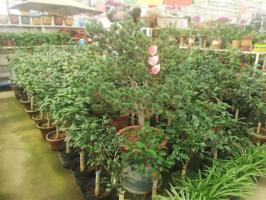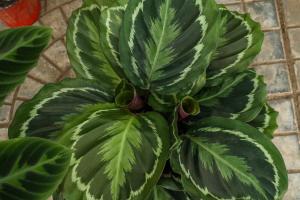Introduction
If you're looking for a beautiful and low-maintenance plant to add to your home or office, a yew might be just what you need. Yews are evergreen trees or shrubs that are native to many regions around the world. They're prized for their dark green foliage, attractive bark, and ability to grow in a wide range of conditions. In this article, we'll explore what kind of yew is best suited for a potted plant, so you can enjoy this stunning plant in your own space.
The Taxus family
The yew tree belongs to the Taxus family, which contains about nine different species. Of these, two species are most commonly cultivated for ornamental purposes: the English yew (Taxus baccata) and the Japanese yew (Taxus cuspidata). Both of these species are known for their dense, evergreen foliage, which makes them popular choices for hedges and topiary. They also have a long history of use in traditional medicine, as the bark and leaves contain chemicals with anti-cancer and anti-inflammatory properties.
English yew for potted plants
The English yew is well-suited as a potted plant because it has a slow, compact growth habit and can thrive in partial shade or full sun. It also has an attractive, pyramidal shape that can be easily maintained with pruning. In addition, its deep green foliage and red berries create a stunning contrast against a neutral background. However, it's important to note that the English yew is poisonous if ingested, so it should be kept out of reach of children and pets.
Japanese yew for potted plants
The Japanese yew is another great option for a potted plant, particularly if you're looking for a more compact and uniform shape. This species has a slow growth rate and will typically reach a height of about 6-8 feet in cultivation. It also prefers a slightly shadier location than the English yew and can tolerate cooler temperatures. The Japanese yew has a similar toxicity to the English yew, so it should also be kept out of reach of children and pets.
Care and maintenance
Whether you choose an English yew or a Japanese yew for your potted plant, proper care and maintenance are essential to keeping it healthy and thriving. Both species prefer well-drained soil and should be watered regularly, particularly during the summer months. They're also relatively low-maintenance and require minimal fertilization, pruning, and pest control. However, be sure to keep an eye out for common yew pests, such as scale insects and spider mites, and take appropriate action if necessary.
Conclusion
Overall, both the English yew and Japanese yew are excellent choices for a potted plant, depending on your preferences and growing conditions. With their sturdy growth habits, attractive foliage, and easy maintenance, they're sure to add a touch of natural beauty to any indoor or outdoor space.

 how many times do yo...
how many times do yo... how many planted tre...
how many planted tre... how many pine trees ...
how many pine trees ... how many pecan trees...
how many pecan trees... how many plants comp...
how many plants comp... how many plants can ...
how many plants can ... how many plants and ...
how many plants and ... how many pepper plan...
how many pepper plan...
































